What's New
Displaying results 4121 - 4130 of 4914

Resource | Publications,
The Hong Kong STD/AIDS update is a composite report on HIV/AIDS reporting and STI caseload statistics published 3 monthly. The current issue has the updated information up to December 2009.

Resource | Presentations,
The Integrated HIV Behavioral and Serologic Surveillance (IHBSS) National Dissemination Forum was held on December 11, 2009 at the Heritage Hotel, Manila.
The presentation provided data on STI trends, HIV cases, modes of HIV transmission in the Philippines.
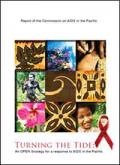
Resource | Publications,
The Pacific is a unique and vulnerable region. It spans a third of the world’s surface and accounts for just 0.14% of the world’s population—with a similar proportion of the global burden of HIV. For Pacific countries, even a small number of people living with HIV can translate into high incidence and prevalence rates that can have devastating impacts on individuals, families, communities and economies. These challenges demand greater global attention. Pacific countries are often included in broad Asia–Pacific regional groupings where the magnitude of the problem in Asian countries overshadows the challenges and needs of smaller Pacific countries.
Even the more-developed countries of the region are not immune to significant challenges to human development, compounded in recent times by the global financial crisis. These Pacific realities led to the constitution of the Commission on AIDS in the Pacific in October 2007 to examine the current scale of the HIV epidemic in the region. The Commission also examined how the Pacific’s response has changed over the past decade and how this momentum can be strengthened.
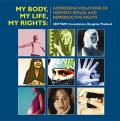
Resource | Publications,
The Asia Pacific Forum on Women, Law and Development (APWLD) has been facilitating consultations with the United Nations Special Rapporteur on Violence against Women, its causes and consequences (UNSRVAW) since 1995, following the inception of the UNSRVAW mandate and appointment of the first Rapporteur in 1994.
The theme of the 2009 consultation was 'Violations of Women's Sexual and Reproductive Rights'. Fifty four women, and one man, from twenty one countries in Asia Pacific came together to affirm women’s sexual and reproductive rights as fundamental human rights. In doing so they claimed women's autonomy to make decisions on issues concerning their own bodies and sexuality.
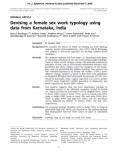
Resource | Publications,
The article examines the extent to which an existing sex work typology captures human immunodeficiency virus (HIV) risk in Karnataka and propose a systematic approach for devising evidence-based typologies.
The proposed typology identifies street to lodge FSWs as being at particularly high risk, which was obscured by the existing typology that distinguishes between FSWs based on place of solicitation alone.

Resource | Publications,
In the summer of 2009, the author visited a humble orphanage for children with HIV/AIDS in Vietnam. Here, like many parts in the world, the very existence of marginalized people with stigmatized illness is hidden away. Relegated to the shadows of society, these children lacked something more fundamental than housing, shelter, nutrition and medications. They lacked families to love and care for them unconditionally. One might think it self-evident that a visit to an orphanage for children with HIV would be profound, but the profundity wasn't where he expected to find it. It was in how the children had created their own family, loving each other like brothers and sisters, and the way the priest who operated the shelters was more than a Father, he was a dad to dozens of children. This is an account of love as harm reduction in the Mai Tam orphanage in Ho Chi Minh City.

Resource | Publications,
A systematic surveillance system for HIV and risk behaviours is essential for a country to monitor its prevalence of HIV and the risks of an epidemic as well as trends over time. All available evidence in Bhutan suggests that HIV prevalence is indeed low in the country, but at the same time, risks may be high.
Based on the principles of Second Generation Surveillance, this first BSS was conducted among population groups considered to be most at risk for HIV in Bhutan.

Resource | Publications,
Together We Must! represents an initial effort to draw attention to the knowledge, institutional capacity and resources needed to comprehensively address the intersection between HIV & AIDS and Violence against women and girls (VAWG). It aims to stimulate debate and collaboration among practitioners and advocates around how to identify and promote policies and practices that are effective and can be adapted to various contexts. Of the multiple suggestions that could be drawn from the 'promising practices' profiled here, the report prioritizes five key recommendations.
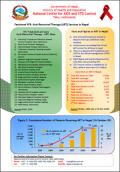
Resource | Fact Sheets,
Facts and Figures on ART in Nepal:
- Anti‐retroviral treatment started in Nepal in February 2004 from Teku Hospital.
- Government is providing free of cost ART service for all those in need.
- There is a National ART Guidelines and SOP for the clinical management of ART in Nepal.
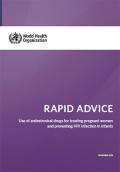
Resource | Guidelines,
The World Health Organization (WHO) worked on the revision of the Use of antiretroviral drugs for treating pregnant women and preventing hiv infection in infants: recommendations for a public health approach, 2006, through a series of coordinated efforts to review and synthesize emerging evidence. This evidence was assembled following systematic reviews, GRADE profile analysis, consultations with key implementers, cost review, and peer review.
The aim was to identify evidence-based recommendations that would be likely to deliver high quality care. The evidence and its quality, risks and benefits, acceptability, feasibility, cost and financial implications, were considered by the Guideline Review Committee and the Peer Review Group, who agreed on a series of updated recommendations.





